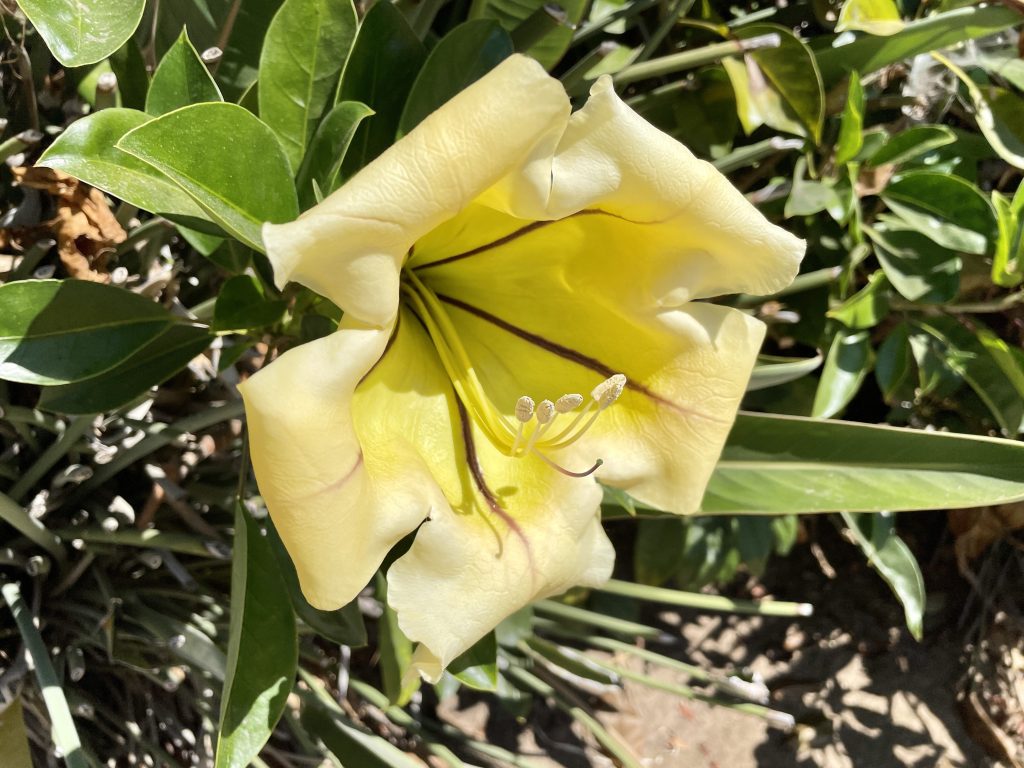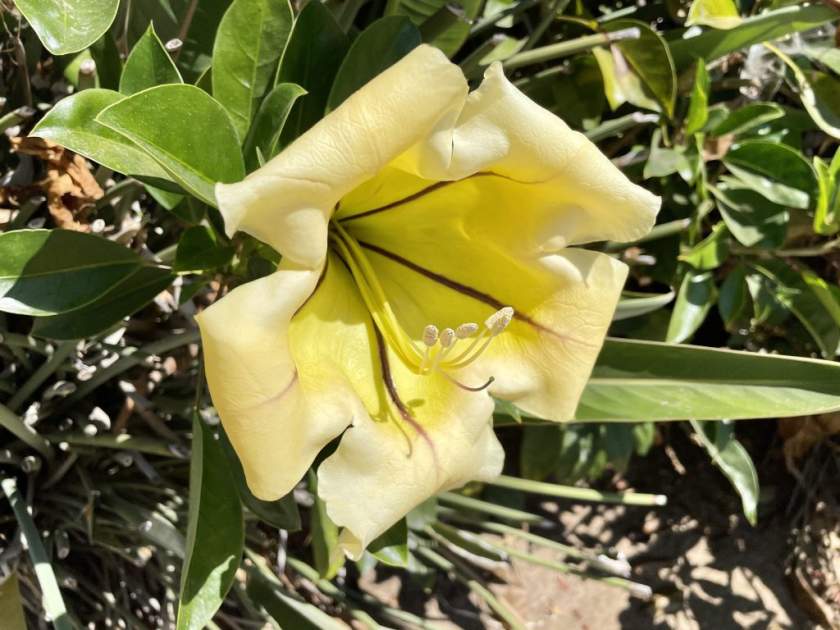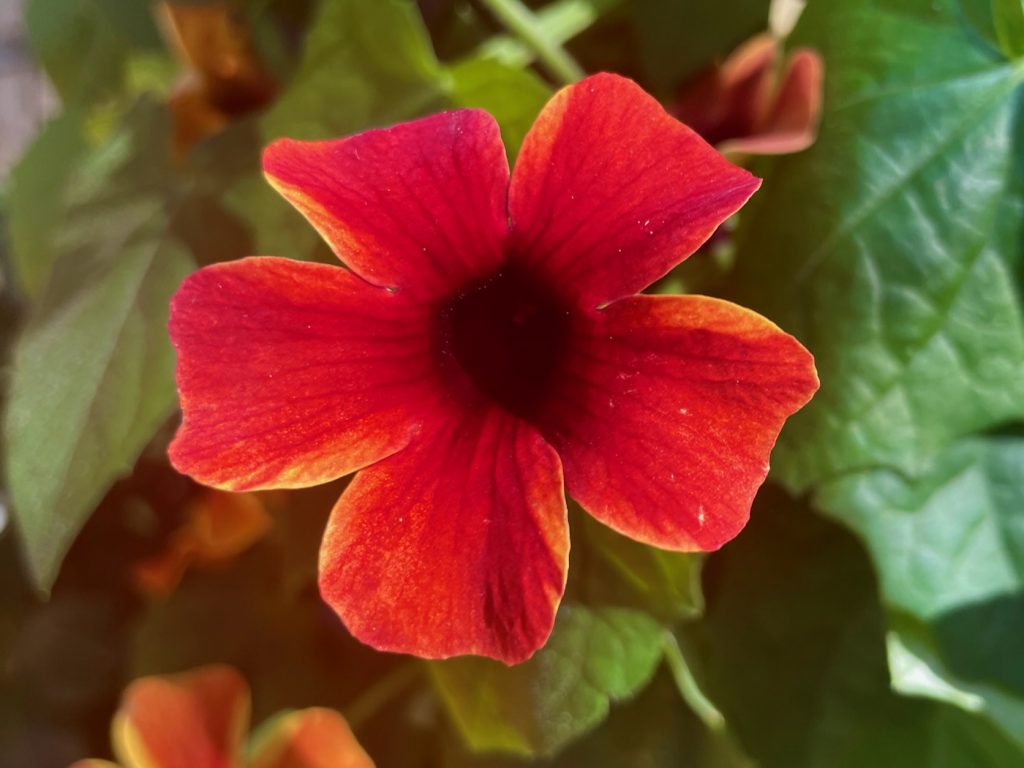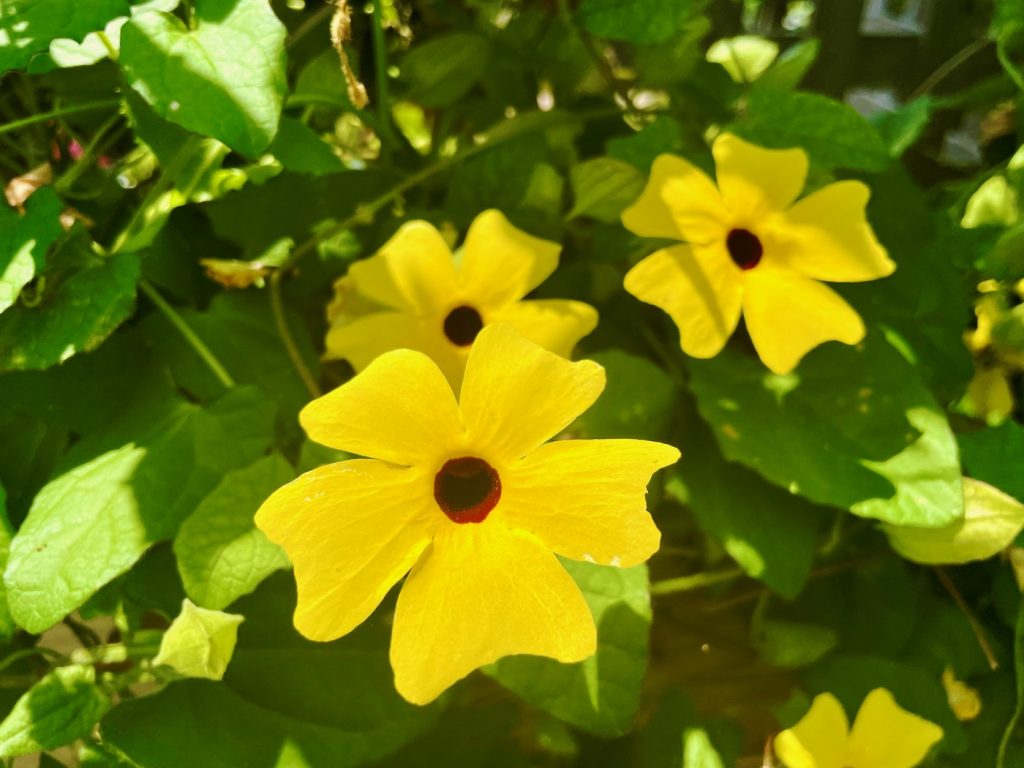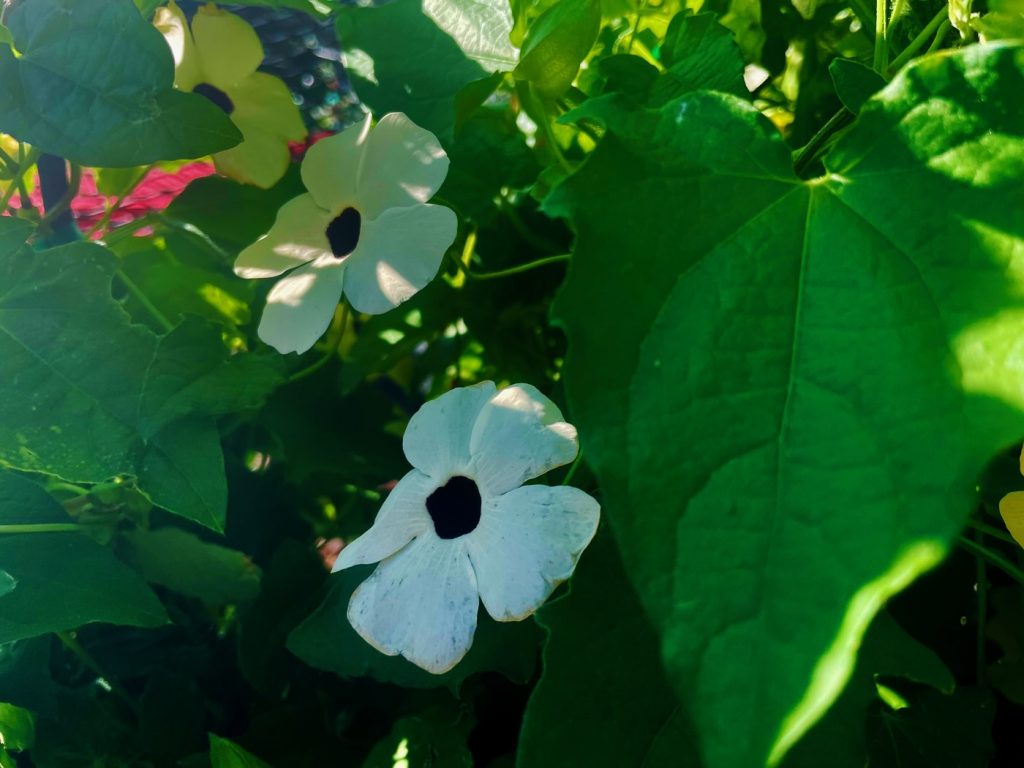Solandra maxima: A Captivating Native of Central America and Mexico
Solandra maxima, a member of the Solanaceae family, is a remarkable plant native to Central America and Mexico. Known by various names such as Chalice Vine, Capa de Oro, Golden Chalice Vine, Hawaiian Lily, or Cup of Gold Vine, it captivates with its stunning flowers and unique characteristics.
Solandra maxima is a large evergreen vine or shrub that can reach impressive heights of up to 6.5 meters or 20 feet. Its twisted branches and grayish peeling bark add to its overall allure. The foliage consists of thick and glossy leaves, approximately 6 inches or 8 centimeters long. However, it is the flowers that truly steal the show.
The trumpet-shaped flowers of Solandra maxima are a sight to behold. With a diameter of about 8 inches or 20 centimeters, they emerge on thick stems and exhibit a captivating blend of pink with brown stripes. These magnificent blooms typically appear in spring and continue to grace the vine throughout the season. As the flowers age, they gradually fade to a delicate white hue. Their fragrance becomes more pronounced in the evenings, adding an extra element of charm to the garden.
Historical Significance: Solandra maxima holds historical significance in its naming. Olof Swartz, a Swedish botanist, bestowed the name Solandra maxima in honor of Daniel Carl Solander, a renowned student of Carl Linnaeus. The specific epithet “maxima” perfectly describes the plant’s impressive size and stature.
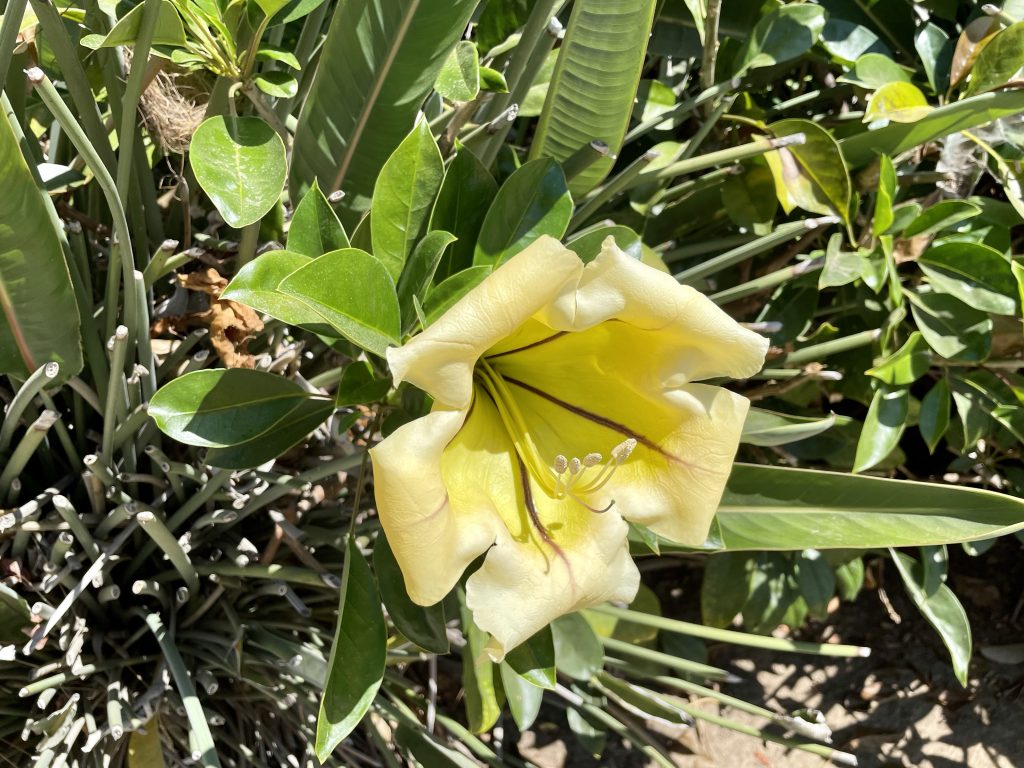
Cultivation of Solandra maxima:
Growing Solandra maxima is a rewarding endeavor that can be achieved by following a few essential guidelines:
Light Requirements: Solandra maxima thrives in both full sun and partial shade. However, it is important to note that excessive exposure to intense sunlight may cause leaf burn. Providing some protection from scorching midday sun can help maintain the plant’s health and appearance.
Soil Conditions: Plant Solandra maxima in moist, well-drained soil that is enriched with fertility. This will ensure optimal growth and development. The plant showcases excellent drought tolerance and can even withstand coastal conditions, making it suitable for a variety of garden settings.
Pruning: Regular pruning helps maintain the shape and appearance of Solandra maxima. By removing any dead or overgrown branches, you can promote healthy growth and ensure a tidy and visually pleasing vine or shrub.
Disease and Pest Resistance: Solandra maxima is generally resistant to diseases and pests. However, it’s essential to keep an eye out for potential issues such as root rot. Regular inspection and proper care will help maintain the plant’s overall health and vigor.
Propagation: Propagation of Solandra maxima can be achieved through both seeds and tip cuttings. While seeds can be used for propagation, they may take longer to produce results. Tip cuttings, on the other hand, tend to yield faster and more reliable results, making them a preferred method for propagating this remarkable vine.
Embrace the allure of Solandra maxima and enjoy the spectacle it creates with its magnificent flowers and lush foliage. Whether climbing walls or trellises or adding a touch of charm as a standalone shrub, this captivating plant will bring a sense of tropical elegance to any garden setting.
